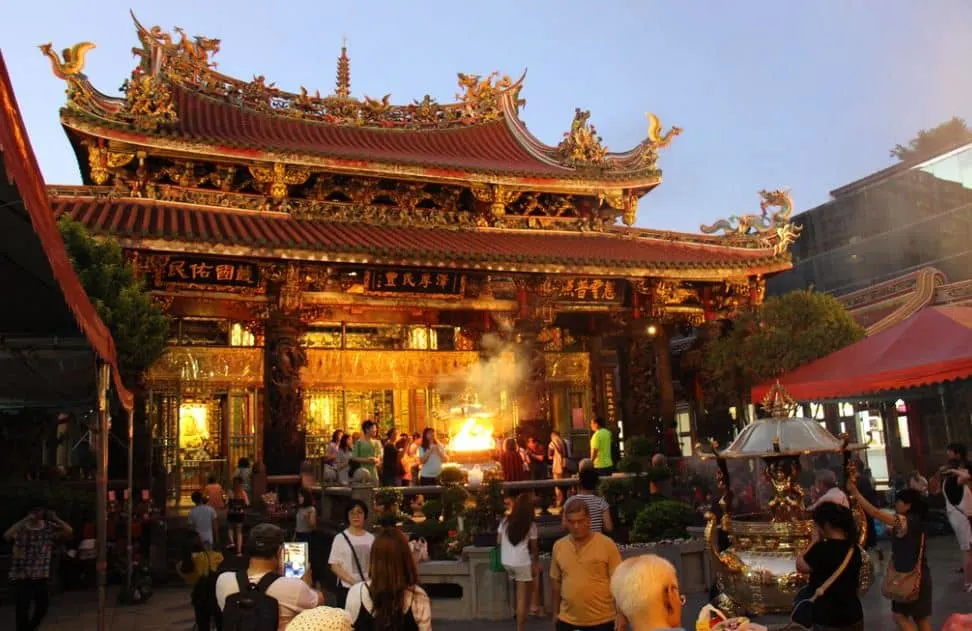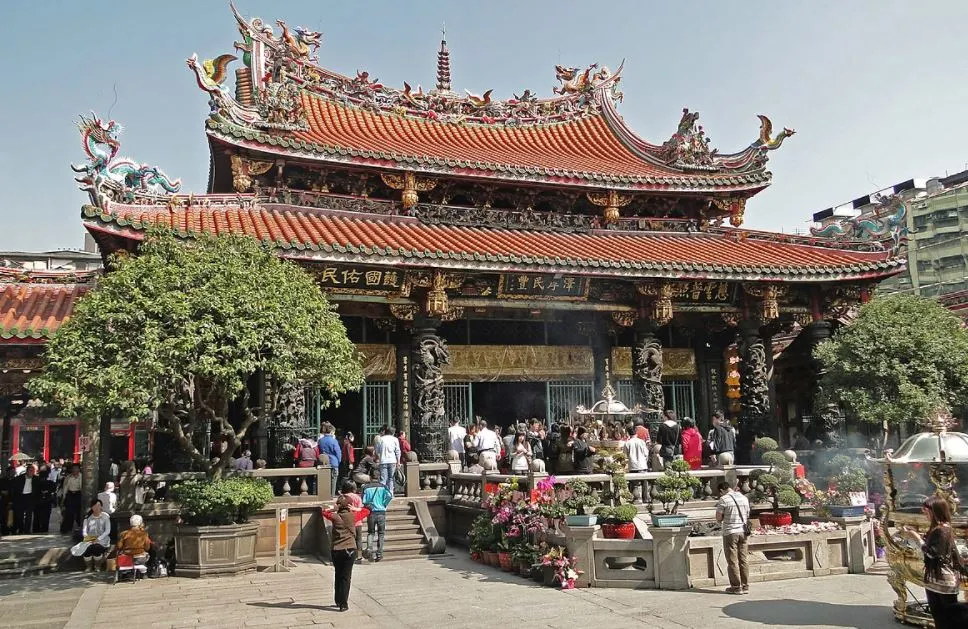If you ever plan to visit Taipei, the capital of Taiwan, then several traditional temples should definitely be on your bucket list.
Let’s take a closer look at some of the most interesting facts about Longshan Temple, one of the most popular temples in this bustling city.
1. It’s located in the oldest district in the city
The Longshan Temple is also known as the “Lungshan Temple” or the “Lungshan Temple of Manka” and is located in the Wanhua District. This is the oldest and one of the most fascinating areas in the city.
Multiple temples were built in this location, and the recent developments of the district create a remarkable blend of traditional architecture with modern structures.
Other popular tourist attractions in the area are the 18th-century Qingshui Temple, the Taipei Botanical Garden, and for the nightlife lovers, the Nanjichang Night Market

2. It was originally built in the 18th century
The original version of the temple was completed in the year 1738 and was built by Chinese settlers in Taipei. This was during the Qing Dynasty (1683-1895).
These immigrants originated from the Chin-Chiang, Nan-an, and Hui-an of Fukien. These regions are located in the southeastern part of China and not too far from the island of Taiwan.
3. It was named after a 7th-century temple in China
Back in their home country, the settlers were fervent followers of the Lungshan Temple in their home region, they decided to build a similar structure in their new home.
The ancient structure in their hometown of Lungshan in the Chin-Chiang county of the Fukien province dated back to the 7th century, so they were sure pretty nostalgic about it.

It has been one of the most important gathering places for Chinese settlers ever since the original temple was completed in the year 1738.

4. Nothing of the original 18th-century temple remains today
The temple built by the Chinese immigrants in the 18th century has been destroyed multiple times during its history, mostly by fires or earthquakes.
Most parts of the structure we see today date back to the early 20th century as the temple was completely rebuilt from the ground up between 1919 and 1924.
One of the most remarkable facts about Longshan Temple is that this reconstruction happened during Japanese Rule in Taiwan, a period that lasted between 1895 and 1945.
5. The structure needed a serious renovation following WWII
Unfortunately, this Japanese rule also meant that Taipei was heavily bombed during World War II by Allied forces.
One of the most notorious events at the end of the war was the so-called “Taihoku Air Raid.” American bombers destroyed large parts of the city on May 31, 1945, and the temple wasn’t spared as well.
What’s remarkable is that even though the main hall and many parts of the right section of the temple were destroyed during this air raid, there was one survivor, a statue of “Kuan-in” or “Guanyin.”
What’s even more remarkable is that this statue was positioned right in the middle of the main hall of the temple!

6. It serves both a Buddhist as a Chinese Folk Religion temple
Even though the temple was originally built as a Buddhist temple, several halls have been added so followers of the “Chinese folk religion” or “Chinese popular religion” could have a place to worship.
These halls contain various altars in which Chinese deities are worshipped, including but not limited to Mazu, a Chinese sea goddess, and Guan Yu.

7. It’s still one of the most popular places of worship in Taipei today
This dual purpose of the temple means that people from a wide variety of backgrounds see the temple as the most important place of worship in Taipei.
It takes a central part in many people’s lives in Taipei and has therefore been declared a historical site by the local government since 1985.
This way this important piece of cultural heritage will be preserved by future generations.

8. The temple can be accessed via a train station with the same name
Do you want to visit Longshan Temple?
Then there’s good news because this popular tourist attraction in the city is very easy to access via the Taipei Metro.
This station is called the “Longshan Temple Station” and is located just south of a public park known as “Mengxia Park.”
The fascinating temple is located just north of this green space in central Taipei.

玄史生 / https://creativecommons.org/licenses/by-sa/3.0/deed.en